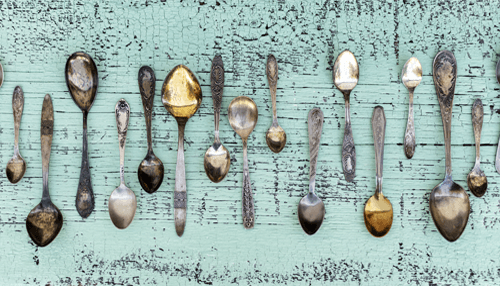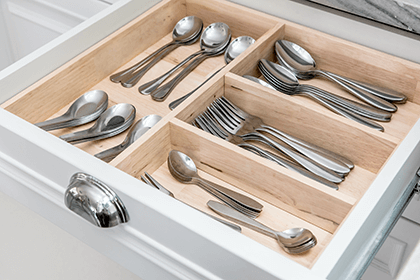A lot more goes into producing the everyday items we use than most people think. If you’re a business owner, especially in the manufacturing sector, you might well be aware of this. Take flatware as an example.
Other than your bed, flatware is one of the household items you may spend the most time using and the least time thinking about. People have been using implements to eat for millennia, but the combination of the fork, knife, and spoon used today in many places became commonplace only in the nineteenth century.
A quick note on terminology, in the United States, ‘flatware’ includes knives as well as forks and spoons, while in other English-speaking countries, knives would be considered ‘cutlery.’
Since then, the process for manufacturing flatware has been refined, but as it grows more efficient, it’s also become more complex and it’s now almost entirely outsourced.
Here are 8 that you might want to keep in mind the next time you’re shopping for a set.
1. Where Your Flatware Is Made Matters
While many forks, spoons, and knives may look similar, where the flatware you’re using is manufactured makes a big difference. For instance, Chinese manufacturing has a range of issues:
- TCE – If your flatware is made in China, you might worry about the use of Trichloroethylene (TCE), which is a carcinogenic compound banned in the US that some factories use in the finishing process. While it guarantees a nice sheen at the point of sale, it can be dangerous.
- Environmental impact in transit – There’s also the environmental impact to consider when it comes to the transportation required to get those forks, spoons, and knives to the drawer in your kitchen. Shipping freight overseas uses a huge amount of energy, while transporting products made closer to home takes a fraction of that.
- Working conditions – Finally, consider the laxer labor laws in place for the people responsible for making your utensils. While US labor laws have worker safety in mind, the same isn’t true in many other countries, China included.
All told, there are quite a few reasons to consider looking for flatware not made in China.
2. Electroplating Is Common
With everything but pure silver and some other materials, most flatware uses electroplating in the manufacturing process.
First done in experimental form in the eighteenth century, and perfected in the nineteenth, electroplating does what it sounds like–a thin layer of metal is plated onto something (called a substrate) using electricity. This makes things thicker, increases their durability, and can add an aesthetically pleasing finish.
3. Forks And Spoons Start Out The Same
For a lot of flatware production, even utensils as different as forks and spoons start out the same way.
The process is as follows:
- Rolled sheets of metal are cut into strips of the correct width.
- The strips are put through machine presses, which cut out rough ‘blanks.’
- The blanks are rolled again at the end, thinning them out but leaving behind a thicker handle. This is called ‘cross rolling.’
- Forks have slots carved out of the end.
- Spoons are stamped with dies that add any pattern to the handle and form their bowls.
4. Cheaper Flatware Doesn’t Go Through Cross Rollin
One of the ways that cheaper flatware saves on costs is that it doesn’t go through the cross-rolling process described above. This saves a step but also means that the flatware won’t likely feel as good in the hand when held.
5. Finishing Techniques Vary By Material
Depending on the material that the flatware is made out of, it’ll be finished with different techniques:
- For example, silver goes through various stages of buffing piece by piece.
- Alloys that’ll be electroplated, on the other hand, are kept wired into racks of a hundred or more pieces. Those racks are then put into cleaning baths and plating vats all at once.
6. Flatware Has To Be Finished
After it’s been plated, flatware still needs to be finished through polishing and sanding before it’s shipped out. Hand polishing involves holding the piece against rotating mops covered with a polishing agent.
With silver and silver-plated pieces, the finishing process can make a big difference in the ultimate appearance of the flatware. For example, different techniques, when combined with the right pattern, can yield:
- A reflective, mirror-like finish
- A satiny glow
- A brushed ‘florentine’ finish.
Interestingly, stainless steel is actually one of the hardest materials to polish, compared with silver or silver plates.
7. Pre-plated Flatware Is Another Budget Production Technique
In order to save time and money, another corner that can be cut for manufacturers is to use a pre-plated sheet of metal out of which strips are cut to make the blanks.
This saves time because the resulting flatware has fewer things that need to be done to it. However, it can yield subpar results. This is yet another case where you get what you pay for.
8. There’s More Than One ‘Stainless Steel’
Anyone who has looked for stainless steel flatware will know–there are a lot of options when it comes to composition. Take the three designations 18/10, 18/8, and 18/0 for example. Each set of numbers refers to what the alloy goes into the flatware in question when it’s produced. 18/10 means the piece would be 18% chromium and 10% nickel.
A few things to note:
- More nickel is good as it means the stainless steel in question won’t easily corrode.
- If the nickel is above 8%, it’ll sometimes get labeled 18/10 even if it’s not quite at the 10% threshold.
- Be careful not to mix up 18/10 and 18/0, which is a mistake that’s easy enough to make, but that makes a big difference in terms of durability.
Conclusion
Whether your interest in flatware only extends to the end of your fork during dinner or you’re curious about design and production, these eight facts should give you plenty to chew on.
More than anything, it’s clear that producing flatware, like many everyday items, involves a lot of expertise and thought.
Whether you’re worried about the environment or worker safety, buying things like flatware closer to your home can make a big difference.



